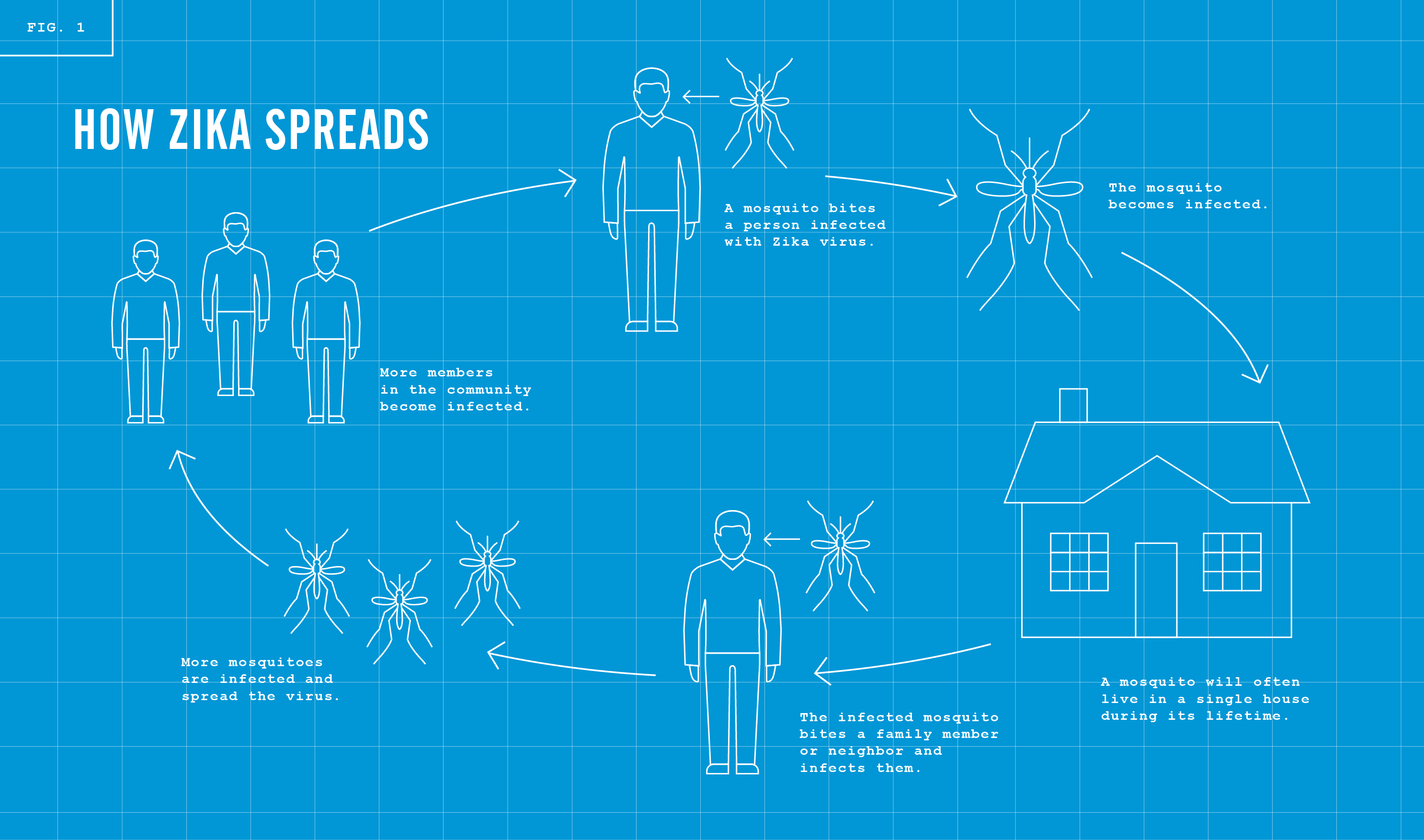
With mosquito season upon us, here are some facts about how the Zika virus is transmitted so you can take the necessary precautions to protect yourself and stay healthy during your summer travels.
The most common method of transmission is through the bite of an Aedes aegypti or Aedes albopictus mosquito. However, Zika can also be transmitted sexually from an infected man to his partners.
In order to carry the Zika virus, a mosquito must first draw blood from a human or animal that is already infected. Once a mosquito comes in contact with the virus, however, she can pass it along to other humans through the saliva she secretes when biting — this is the same chemical that irritates human skin and can leave welts.
The average lifespan of a mosquito is approximately two weeks. During this time, an infected mosquito may bite several people and can spread the virus with each bite. This process is compounded as the number of mosquitoes in a given area is increased.
Once a human is infected, he or she is most at risk of spreading the virus during the first two weeks of infection. After this time, the virus usually subsides and most people will develop an autoimmunity to be protected from future infections.
It’s important to know: not everyone who has Zika will experience symptoms. However, the most common symptoms are fever, rash, joint pain and conjunctivitis (red eyes). There is also a rare chance of contracting a more severe condition like Guillain-Barré Syndrome.
Therefore, take proper precautions to protect yourself from becoming infected or contributing to the spread of the virus:
Wear protective clothing: Long-sleeved shirts and pants help protect your skin from exposure to mosquitoes. You can also spray your clothes with insect repellant, or for extra protection, treat your clothes with permethrin.
Use insect repellant: Be sure to look for active ingredients including DEET, PICARIDIN, IR3535, OIL of LEMON EUCALYPTUS, and PARA-MENTHANE-DIOL.
Remember, daytime is the most dangerous: A. aegypti and A. albopictus are aggressive daytime biters, so take proper precautions and be aware that these mosquitoes also like to live indoors.
Zika and Sexual Transmission
Men are the only ones who are able to pass the Zika virus to their sexual partners. According to the World Health Organization (WHO), if a man has been diagnosed with Zika, or has experienced Zika-type symptoms, he should abstain from sex or wear condoms for up to six months. Women cannot transmit Zika through sex.
Additionally, any individual who has travelled to areas where the virus is spreading is advised to abstain from sex, or use a condom for eight weeks after travel.
For more information, visit the CDC website on Zika and sexual transmission.
Zika and Pregnancy
Zika virus can have a damaging effect on the development of a fetal neural system if a pregnant woman is infected during the early stages of her pregnancy. According to a recent study published by researchers from Harvard and the CDC, a woman infected by Zika during her first trimester is shown to have a 13 percent risk that the child will develop microcephaly.
This same study found “negligible” risks for women infected with the virus late in second or third trimesters. To date, there are no reports of Zika being passed to infant children through breastfeeding. More research is needed before the health community is able to make a definitive statement about the risks associated with microcephaly or other birth defects.
For more information about Zika and pregnancy, visit the CDC page for Pregnant Women.
Additional resources for Public Health Officials, and State and Local Governments:
A copy of the CDC Interim Response Plan for how to deal with a local Zika outbreak.
Recommendations for Zika Vector control (CDC)
Additional resources for Individuals and Businesses:
How to protect against mosquito bites (2 page PDF from the CDC)
Additional resources for Doctors and Health Professionals:
Resources in multiple languages are available through the Centers for Disease Control and Prevention.



